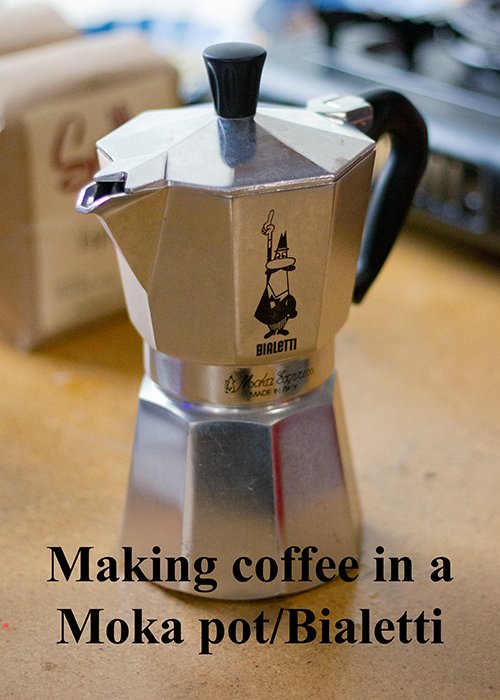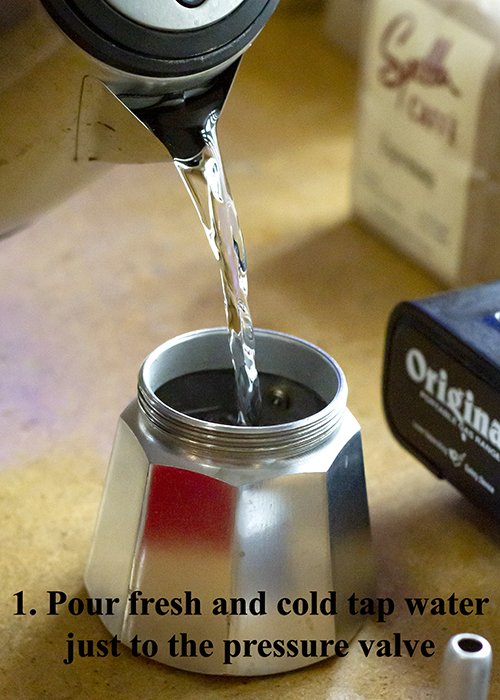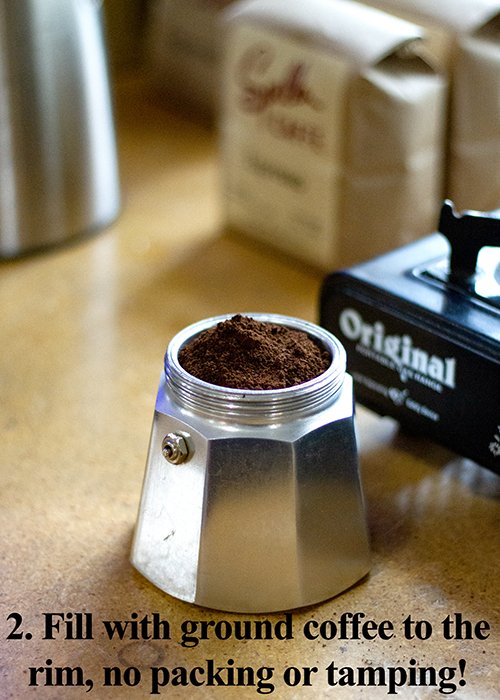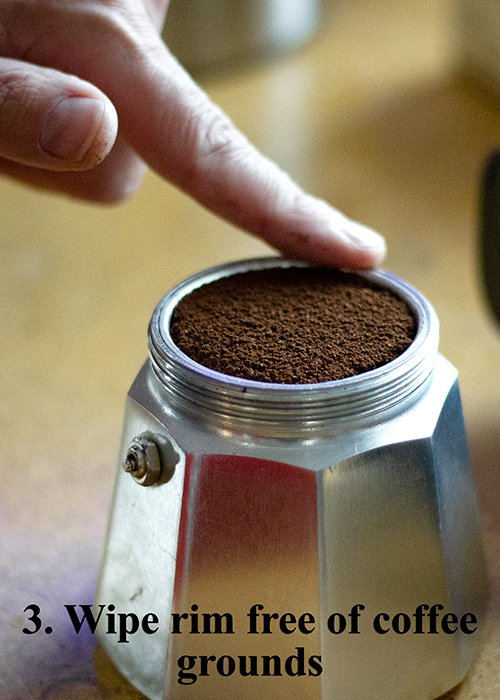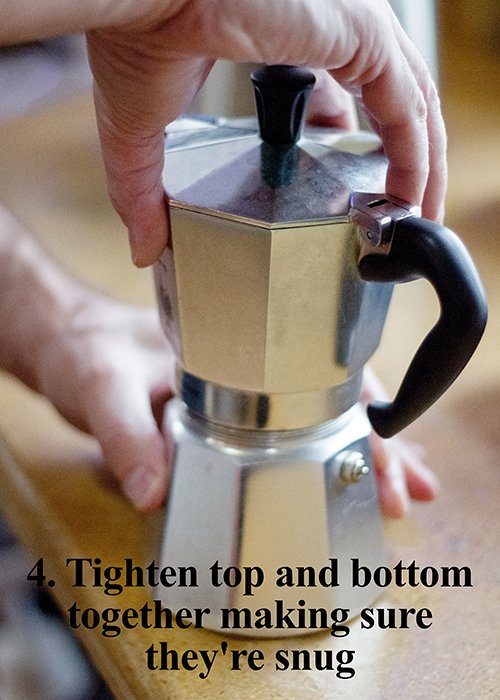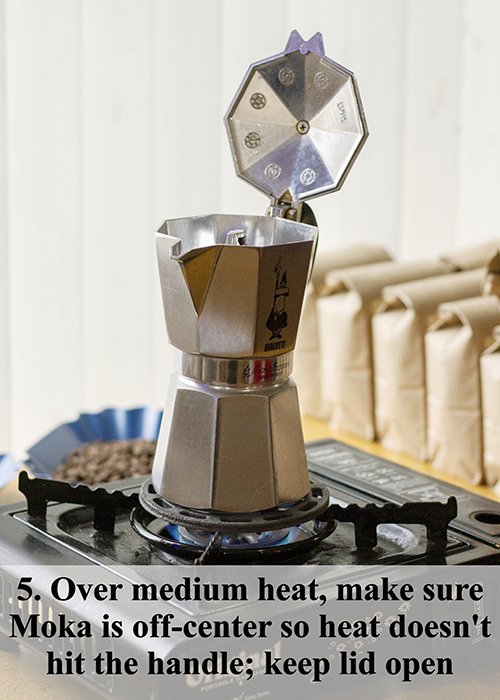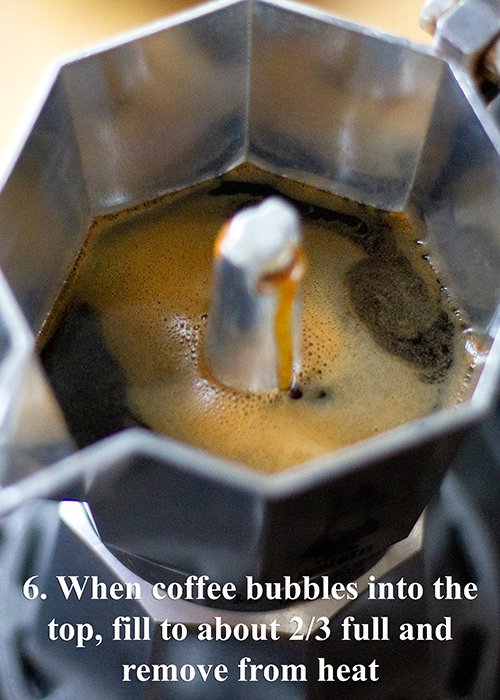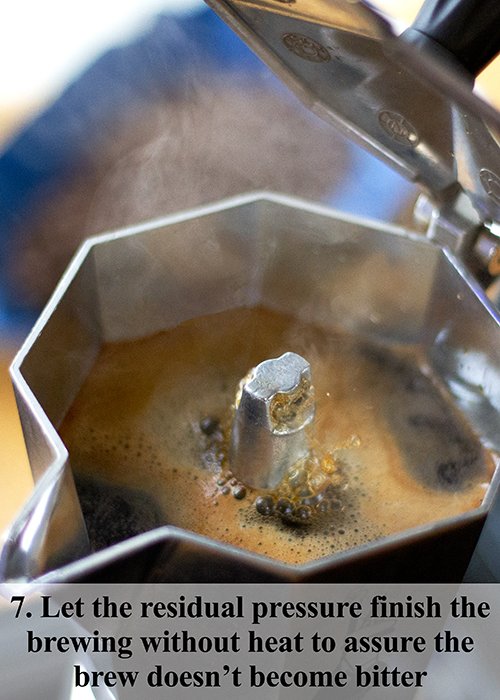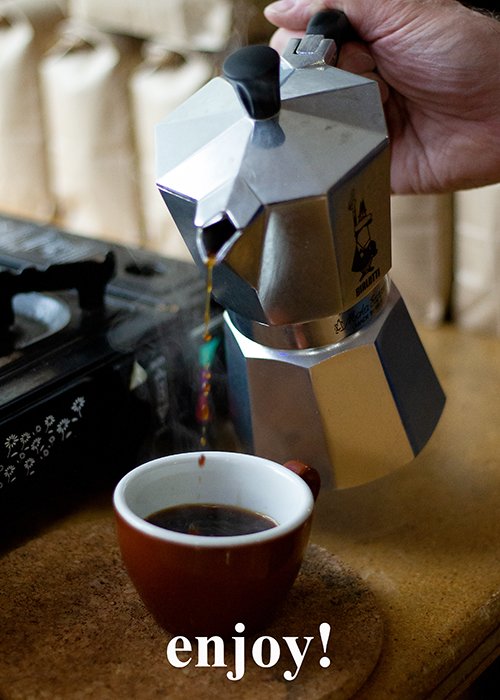Mastering the Moka Pot: A Guide to Brewing Delicious Homemade Espresso
Are you ready to elevate your home barista skills? Learning to master the Moka Pot may be the answer you are looking for. It’s a great combination of accessible, affordable, and produces a delicious beverage. The key to success with your moka pot is to use high-quality coffee beans, cold, filtered water, a consistent grinder, and the perfect coffee-to-water ratio for your personal taste. With a little practice on your moka pot (and some caffeine-fueled determination,) you'll quickly find yourself brewing delicious homemade espresso in no time. Here's how to operate your moka stovetop espresso maker:
Filling the water: Start by filling the bottom chamber with cold filtered tap water. Just make sure not to let the water go over the pressure valve, or you could have a full-blown kitchen disaster on your hands.
Grinding and adding coffee: Next, grind your coffee beans until they're the consistency of fine table salt (for the most consistent grind, we recommend a burr grinder).
Cleaning the rim: Place the ground coffee in the filter basket and level it with a butter knife or something like a popsicle stick. No need to pack or tamp the coffee. Place the filter basket with the ground coffee into the middle chamber of the moka pot and make sure to wipe the rim before assembling (to ensure a good seal).
Assembling the pot: Screw the top chamber onto the bottom chamber, making sure it's tightened securely until snug. This could be another area of failure to seal the pressure.
Placing on the stove: Put the moka pot on the stove over medium heat. As the water begins to boil, steam pressure will build up and push the hot water and coffee through the filter basket and into the top chamber.
Watching the coffee: Once the coffee begins to bubble, wait for it to fill the top chamber 2/3 of the way full then remove the Moka Pot from the heat.
Letting the residual pressure finish: Brewing without heat ensures that the brew doesn’t become bitter. Once it fills close to the top, serve.
Savoring: Enjoy the rich, delicious flavors of your homemade espresso and pat yourself on the back for a job well done.
If you’re inclined to steamed milk, you can get a milk frother or find a vintage stove top espresso maker with a built-in steam wand (admittedly now the price begins to go up depending on the seller, if you go this route, make sure it has all the seals and they are in good shape–this could be a subject for another article).
Our current offerings that sparkle with use of a moka pot are:
Our Signature Espresso, which is our most complex espresso blend with notes of deep chocolate, crème brulée, candied ginger, and a lime finish.
Rossalina Espresso is a lovely choice for home brewing with a more forgiving temperament for espresso-making; Notes include nutty, caramel tones, and anisette.
The Yemen Mokka, at the time of this writing we are currently accepting pre-orders for this uncommon offering. It makes a stellar espresso with notes of figs, dates, and bittersweet chocolate tart it also delivers a crazy amount of crema.
Ethiopia Guji Kercha has a delicious fruit-forward bouquet of red currant and ginger with a spiced finish.
Guatemala Monja Blanca produces a deep, rich cup with plum & blackberry, sweet pastry, and deep dark chocolate.
Our Colombia El Corazon has notes of orange, walnut, and nutmeg and makes a great single-origin espresso.
Decaf Espresso with hints of caramel and chocolate, this coffee is so convincing, you won't believe it's decaf! Blend half the decaf with half regular coffee for lessened caffeine and a very enjoyable evening cup.
We recommend using a Bialetti Moka Pot which was invented in 1933 by Alphonso Bialetti, who named it after the Yemen city of Mocha. We have found Bialetti coffee makers still produce the best results compared to other brands. Bialetti coffee makers/moka pots can be found in big box stores and even thrift shops–though we recommend second hand only if all the seals look good and if they are new in appearance. Moka pots are made of aluminum and should never be put in the dishwasher.
You can visit Bialetti directly or order a moka pot from Whole Latte Love and let them know Spella sent you!
In Italy, preparing un espresso at home is a staple before someone can get to the coffee shop for a professionally executed espresso. Squisito!
Let us know if you have any questions! Contact us at spella@spellacaffe.com.

